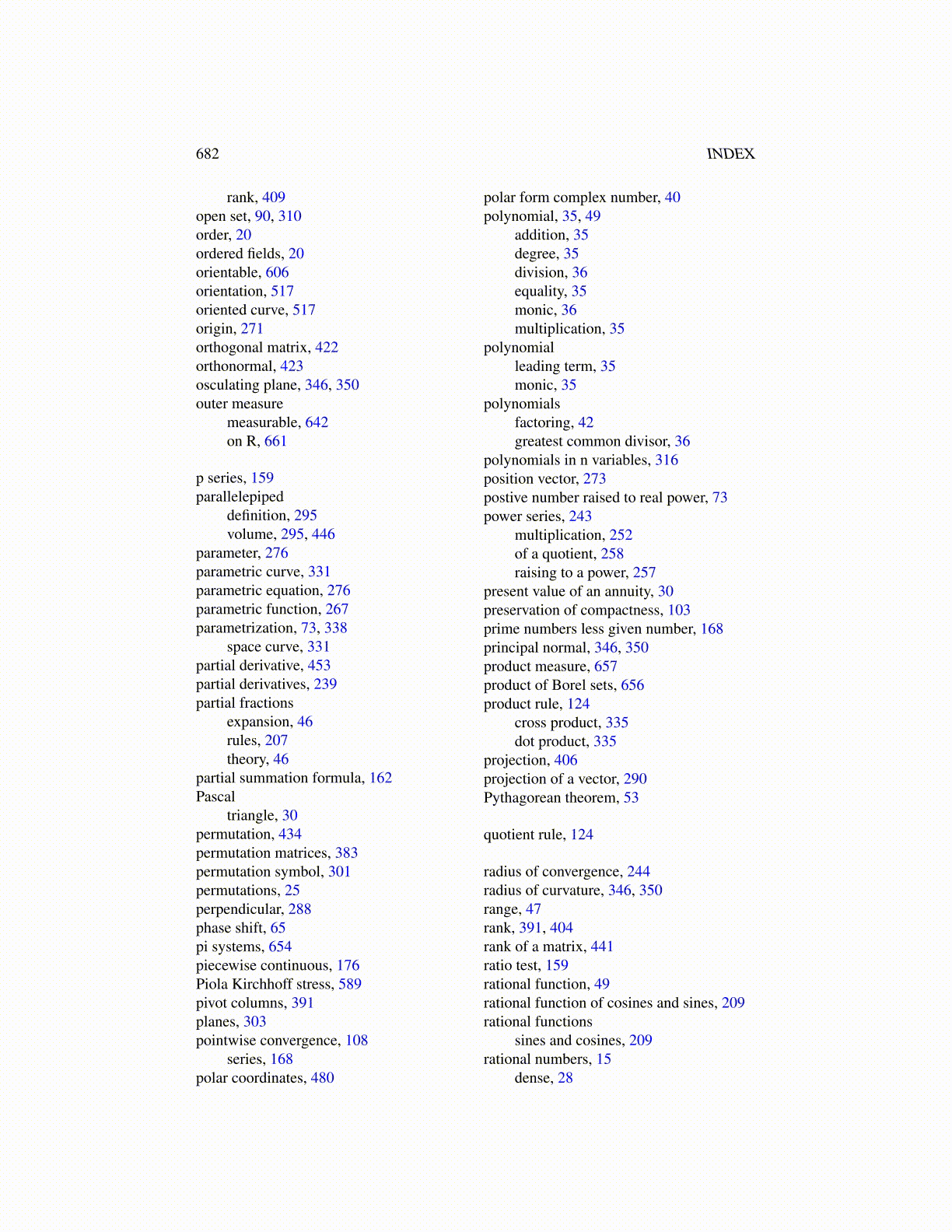
682 CHAPTER 33. THE LEBESGUE MEASURE AND INTEGRAL IN Rp
(e) Next show that for x ∈ (y,z) ,
φ (y)+λ y (x− y)≤ φ (x)≤ φ (y)+az (x− y)
for some az and for x ∈ (w,y) , there is aw such that
φ (y)+λ y (x− y)≤ φ (x)≤ φ (y)+aw (x− y) .
Thus φ is continuous. Note that there is no change if φ is convex on an openinterval.
7. ↑ Prove Jensen’s inequality. If φ : R→ R is convex, µ(Ω) = 1, and f : Ω → R is inL1(Ω), then φ(
∫Ω
f du)≤∫
Ωφ( f )dµ . Hint: Let s =
∫Ω
f dµ and use Problem 6.
8. B(p,q) =∫ 1
0 xp−1(1− x)q−1dx,Γ(p) =∫
∞
0 e−tt p−1dt for p,q > 0. The first of theseis called the beta function, while the second is the gamma function. Show a.) Γ(p+1) = pΓ(p); b.) Γ(p)Γ(q) = B(p,q)Γ(p+q).
9. If X : Ω → Rp is measurable, where (Ω,F ) is a measurable space, show that
X−1 (B) ∈ F
for every B a Borel set.
10. ↑Let (Ω,F ,P) be a probability space. This means the measure P has the prop-erty that P(Ω) = 1. A random vector is a measurable function X : Ω → Rp. Theprobability distribution measure λX is defined as follows. For E Borel, λX (E) ≡P(X ∈ E). Show this gives a probability measure on the Borel sets of Rp. Some-times this measure can be realized as an integral of the form
∫Rp f (x)dmp but in
general, this will not be the case. However, it is a perfectly good measure and all thetheory of the Lebesgue integral developed above can be used.
11. ↑In the context of the above problem, suppose E is a Borel set in Rp. Note first thatthe concept of a Borel set is not even defined on Ω. Explain the following equations:∫
XE (x)dλX = λX (E)≡ P(X ∈ E) = P(X−1 (E)
)=
∫XX−1(E) (ω)dP =
∫XE (X (ω))dP
Be sure to explain why everything makes sense and is appropriately measurable.Extend this to conclude that if f is a Borel measurable nonnegative function, then∫
f dλX =∫
f (X (ω))dP
Hopefully you will see from this that there are lots of measures which are of interestother than Lebesgue measure.
12. Show that if f is any bounded Borel measurable function, then∫f dλX =
∫f (X (ω))dP